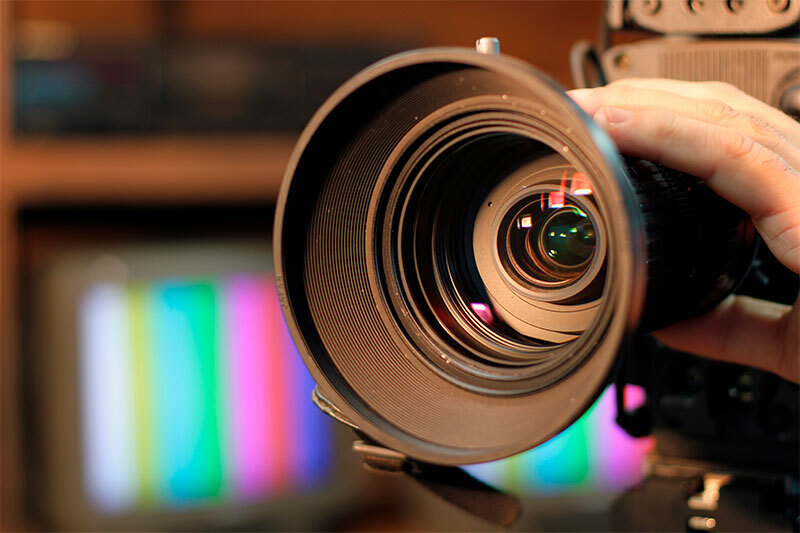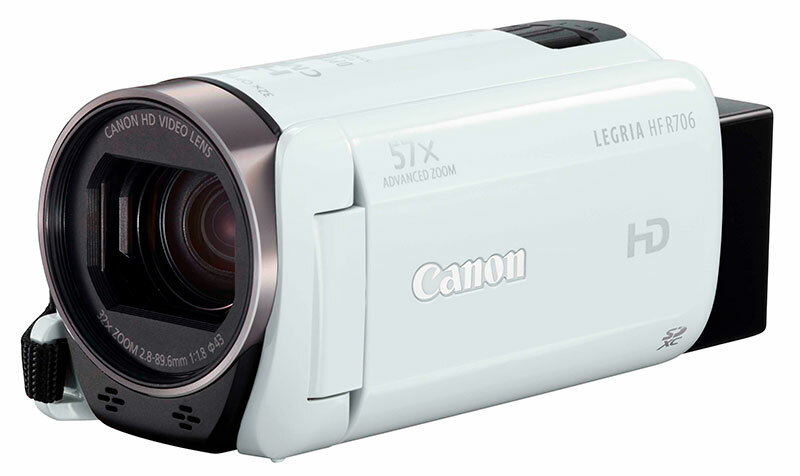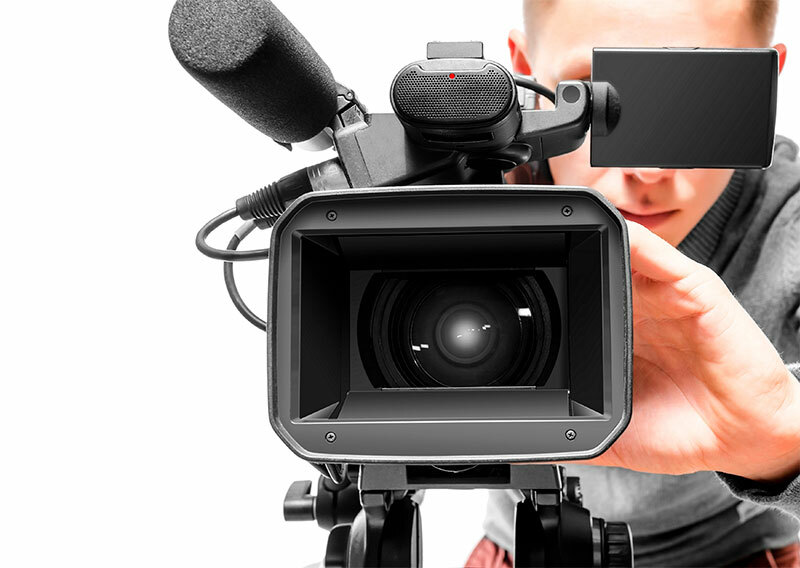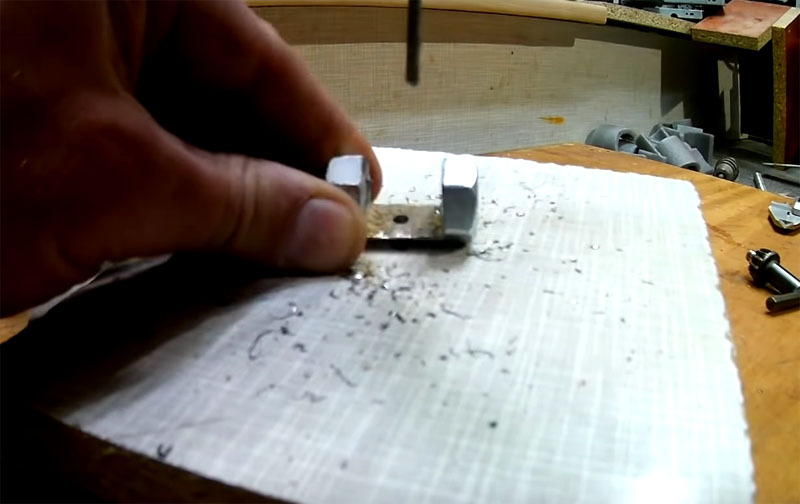There are many moments in life that you want to keep in mind. However, both bad and good memories are forgotten and lost in time. You can save them with a video camera. Many remember the cassette apparatus of the late 90's - bulky and inconvenient, giving a picture of a very mediocre quality. Today's digital models have seriously evolved. But due to the abundance of new functions and standards of video recording, making the right choice has become more difficult.

Contents:
- The best cameramer companies
- The device and operating principle of the
- camcorder Cameras
- Camcorder options
- Which camcorder to choose
- The cost of the
camcorders The best camcorder manufacturers - which firm to choose
Camcorders are a very popular and sought after type of equipment, therefore its rangein the rulers of different manufacturers is growing steadily. But do not rush to buy the first model you got - you can be disappointed in it in a couple of days, or even have to give it to repair.
If you want the camcorder to be your first and only love for the coming years, do not spare money for quality devices from well-known companies:
1. Sony
2. Panasonic
3. Samsung
4. Canon
5. JVC
The best models of these manufacturers are presented in our video cameras rating. In the same place, we examined in detail their main characteristics, pros and cons.
But for a full-fledged selection of the camera, only the name of the brand is not enough - the probability is great that the seller will simply drag you the most expensive model, the possibilities of which will be unclaimed. So let's figure out what your new camera should be able to do, and what functions can be painlessly discarded so as not to overpay for them.
The device and operating principle of the

camcorder The video camera is a sophisticated electronic device consisting of several main units:
- Lenses;
- Microphone;
- Signal Processing Unit;
- Light Sensitive Matrix;
- Viewfinder and / or LCD screen, which successfully replaces it;
- of the Media;
- Battery pack.
In the powerful cameras of the middle and higher price segment, there is also an image stabilizer, compensating for the jitter and displacement of the device during shooting. However, this is just one of the options for lenses - a kind of cushioning suspension for lenses.
In short, the principle of the video camera is as follows: what you see on the screen or in the viewfinder, is caught by the lens and projected onto the optoelectric converter inside the device. Here, the light image transmitted to the matrix is converted into an electrical signal containing information about its brightness and color component. In the processing unit, several successive processes occur, as a result of which the signal is converted and redirected to the display, and at the same time - recorded on the medium.
Types of camcorders
Amateur

These are the most simple, cheap and compact video cameras of all. They do not have replaceable optics, which degrades the quality of shooting under certain conditions, and video in such models is recorded on an ordinary flash card. The built-in microphone is small, often just hidden in the case.
However, the functionality even for amateur models is quite decent and allows an inexperienced user to "play", exposing various shooting modes. Previously, such cameras shot movies only in SD format, that is 720x576 pixels. But today you can find good models that work with HD and Full HD resolutions.
Pros:
- Acceptable picture quality;
- Light weight and dimensions;
- Easy to use;
- Compatible with any computer via USB;
- Low cost.
Cons:
- Video quality is worse than other models;
- The minimum range of the microphone - "catches" only sounds near the camera.
Semi-professional

The next stage of evolution is an intermediate link between amateur and professional cameras. Such devices often have three matrices of not less than 1/4 "in size, which means that the colors of the image are more reliably transmitted." Semi-professional cameras weigh from 2 to 4 kg - in one hand you can not swear. "But the recording, like in amateur devices,removable memory card. This technique takes video in HD 960x720 or HDV 1440x1080 pixels
Pros:
- Worthy video quality;
- Average weight;
- A good microphone capable of catching sounds at distances up to 25 m;
- Up to 4 sound channels;
- AlreadyThe stabilizer is used
- Large selection of manual settings
- Large LCD screen
Cons:
- Cost above average
Professional

These are serious devices intended for use on television and in documentary. Those such cameras are pretty much( from 5 to 15 kg) - in the hands of a similar "machine" especially you can not hold it. Therefore, there are special belts and tripods, and shooting in motion must be conducted from the shoulder.
Professional video cameras always come with three color matrices of not less than 1/2 "in size." The optics are extremely replaceable. "The microphone is taken out separately and has a rather long length( the so-called" gun. ") However, there is often no LCD screen and autofocus -Such serious cameras often shoot video in AVCHD format( 1920x1080 pixels), but also can work in 4K, HD, SD, MPEG, etc.
modes:
- Wide functionality( image stabilization, modenight video, manual focusetc.);
- Very high image quality;
- Microphone catches at fairly long distances - up to 50 m;
- Often there is the possibility of recording surround sound 5.1;
- Compatible with other professional tele equipment
- Very high cost;
- Largeweight
Action cameras

These compact head cameras are necessary for sportsmen, extreme players and video bloggers to record their tricks or record what is happening around. Such devices are equipped with matrices from 5 to 12 Mp, have rather wide viewing angles in the range of 90-170 ° and record video on a memory card in a format not lower than Full HD with resolutions of 1280х720 or 1920х1080.The battery here can work up to 2.5 hours, the weight of the action cameras can vary from 70 to 200 g.
Pros:
- Excellent stabilization;
- Ability to conduct accelerated shooting;
- High quality pictures with accurate color reproduction;
- Minimum area of "dead zones";
- Reliable fasteners for all surfaces;
- Durable and often dust-tight housing;
- Acceptable cost.
Cons:
- Battery is quickly discharged, especially it "sits" Wi-Fi;
- Unsuitable in everyday life.
Video selection parameters

Record standard
Here, the choice depends largely on what equipment you will be viewing the footage, and what processing is required for this.
Despite the abundance of existing formats, generally accepted standards of only 3:
1. SD - the easiest, the initial level, giving a picture with a resolution of 720х576 px. Gradually goes to the past, although it is still used on amateur cameras. When viewed on any external monitor gives a noticeable graininess.
2. HD - good quality, but when viewed on a large screen, the picture often has to be stretched, which can lead to distortion.
3. AVCHD - allows you to immediately record an image in Full HD( 1920x1080) or even 4K, and if necessary compress it to any desired resolution.
Scan Type
Another parameter that affects the recording quality and the final cost of the camcorder is indicated in the marking next to the resolution:
1. i - interlaced scanning, often found on inexpensive devices. Here, each frame is slightly blurred, which makes it easy to flicker when viewed( especially when the movie stops).
2. p - Progressive scan provides crisp and beautiful frames, but in shooting mode "eats" too much camera resources.
Matrices
The matrix displays a visual image by colors. This is one of the most important elements of any camera, therefore it is necessary to pay special attention to its characteristics.
There are two types of matrix:
1. CMOS - have a good color transfer and a resolution of up to 1080 pixels, while they are relatively inexpensive and more economical to consume battery power.
2. CCD - as accurately as possible, transmit colors at the same resolution and do not create visual noises. Installed on semi-professional and professional cameras.
The ideal quality of the survey is provided by the 3ssd matrix, that is, a set of three high-sensitivity filters.
The quality of the video is affected by the size of the matrix - the wider it is, the more it gathers the light, making the picture brighter. This parameter is indicated in the form of an inch fraction with a unit in the numerator. Accordingly, the smaller the value of the denominator, the larger the size of the matrix. Ideally, it should be at least 1/2 ", but 1/4" is allowed.
Lens There should also be a comprehensive consideration of several characteristics of optics, since most budget cameras come with a built-in non-removable lens.
Aperture - optical power of optics. As in the matrix, it is indicated in the form of a fraction and also determines the brightness of the picture in the frame.
The viewing angle is what people call "go away".Many people faced this problem: when you need to shoot a wide stage, so that it fits in the frame, you have to step back a few meters. At good angles, this eliminates the need.
However, the review also depends on the focal length of the lens f( it is indicated on its case in the form of a pair of digits through a hyphen).The further the lens of the camera from the matrix is located, the narrower the viewing angle, but the objects at a distance can be considered much more detailed.
The example will help to understand the interrelation of all these characteristics:
1. With a minimum value of f = 2.8 mm, the viewing angle for matrices of different sizes will be 65-82 ° horizontally, which will allow shooting objects from a distance of up to 5 m.
2 At maximum f = 16 mm, the survey is reduced to 17 °, but it can be surveyed from 40-50 m.
3. The optimum f is 3.5-4 mm, where the angle corresponds to 60 °sees what is happening before him).In this case, the ideal detail of the image can be obtained from a distance of 10 m.
Zoom - the ability of the lens to artificially approximate objects due to the same change in focal length or by digital stretching of the frame. In the first case, the optical zoom works, which provides an increase in the picture without losing the quality of the shooting. In the second, scaling gives a simple enlargement of pixels, which reduces the clarity of the image. What should be the multiplicity of the increase - it's up to you. But for amateur and semi-professional shooting usually enough 15-times zoom.
Sound
The quality of audio depends on the number of audio tracks in the camcorder. The minimum number is 2, but the more recording channels, the better. Excellent, if the microphone is not built into the case, but is output to the outside and has a noise-canceling effect.
Media
This is the format of the devices on which the camcorder can record a movie. Here, the choice depends on the equipment on which you will process or watch the recording.
The current devices are able to work with two main types of media:
1. Memory card is the most convenient option, because with its compact size, the USB flash drive is able to hold a sufficient amount of information. At the same time, the dimensions and weight of the video camera are reduced.
2. Hard disk - like on the computer, it's "native" and very capacious memory of the equipment itself. The main advantage of such a device is that during a long shooting( all day without interruptions) you can not change the media.
Additional functions of
Additional features include the individual features of each camera:
- Image stabilization - effective optical, increasing the size of the lens, or electronic, compensating for only a slight trembling of the hands;
- Night mode;
- Photography;
- Manual focus;
- Wi-Fi and / or NFC connection, etc.
Globally, they do not influence the quality of the video, so you define them yourself.
Battery
Here it is necessary to pay attention not so much to the capacity of the battery or the possibility of using additional batteries, but rather to the amount of resource-consuming functions of the device.
The battery life is affected by almost everything that is in the camcorder, from the presence of the screen, to the used modes:
1. Actually shooting is the most energy-consuming process. If you will shoot a video more often than watching it, then the stated time of work must be specified.2-3 hours of continuous shooting is a good result for the camera.
2. File browsing - less resource usage. In this mode, the camera can hold for several hours, so it will not need a large battery capacity.
3. Waiting time - "eats" a minimum of energy. The waiting camera can lie on for more than a day.
Display
The principle "the more, the better" works here. Good diagonal, high resolution, the ability to rotate the standard screen - all this will make the camcorder more convenient to use. To get a quality picture on the display without glare and color distortion, you should choose AMOLED or LED-variants.
Which camcorder to choose

1. Those who are engaged in professional shooting, need appropriate equipment, working with AVCHD-format and writing a picture on the hard drive. Matrices - only 3CCD, progressive scan, but better combined. There are no specific requirements for a standard lens, as it often goes replaceable, although optical image stabilization should be in any case. Functionality - the richer, the better. But on the microphone should pay close attention. It must necessarily be rendered and with good range. Ideally, if you can record sound on 5 channels, but 4 will do.
2. If you are a "home" director or are engaged in video journalism, take a semi-professional model with a CMOS matrix - then the battery will be charged for a longer period. It is desirable that it supports Full HD shooting format, but in extreme cases, you can limit yourself to HD.Stabilization is mandatory, and, like in professional equipment, preference should be given to optical. It is better to take the device with a slot for a memory card and a rotary display with the maximum possible diagonal. Usually these cameras have quite a lot of functionality, so you will often have to work with the on-screen menu.
3. For entertainment and home use enough compact amateur model with one CMOS-matrix and recording on a USB flash drive. The recommended HD format, but if the budget is limited, and you are ready to put up with the fuzziness of the image, you can stop at SD.Choose a wide-angle lens if you plan to take the camera with you on a trip and shoot landscapes, or long-focus if you just want to capture the household.
4. For athletes and adrenaline maniacs, the only right choice is an action camera with helmet mounts. Here you do not need to check any parameters, because all modern models have the necessary functions: recording in Full HD or 4K format, wide viewing angle of about 160-170 °, acceleration of shooting for the slown-moushen, etc. The only thing - pay attention to the resolutionmatrix: the optimal is an indicator of 8 Mp. Everything else depends on the amount that you are willing to spend: the more expensive and modern the camcorder, the higher it will be protected from water and dust and more shooting modes.
Cost of camcorders

1. The cost of professional models ranges from 50 thousand rubles to 4.8 million.
2. For semi-professional model will have to give from 5 to 200 thousand rubles.
3. Amateur cameras are sold at a price of 1500-15000 rubles.
4. Action cameras go from 1800-2000 rubles.for the most simple models with a matrix of 1-5 Mp to 40 thousand for supermodels, recording UHD 4K format and having a resolution of 8-16 Mp.



